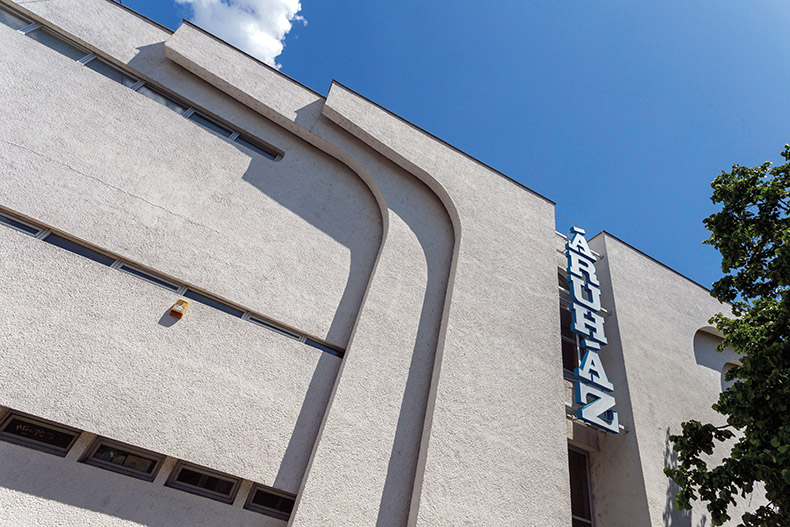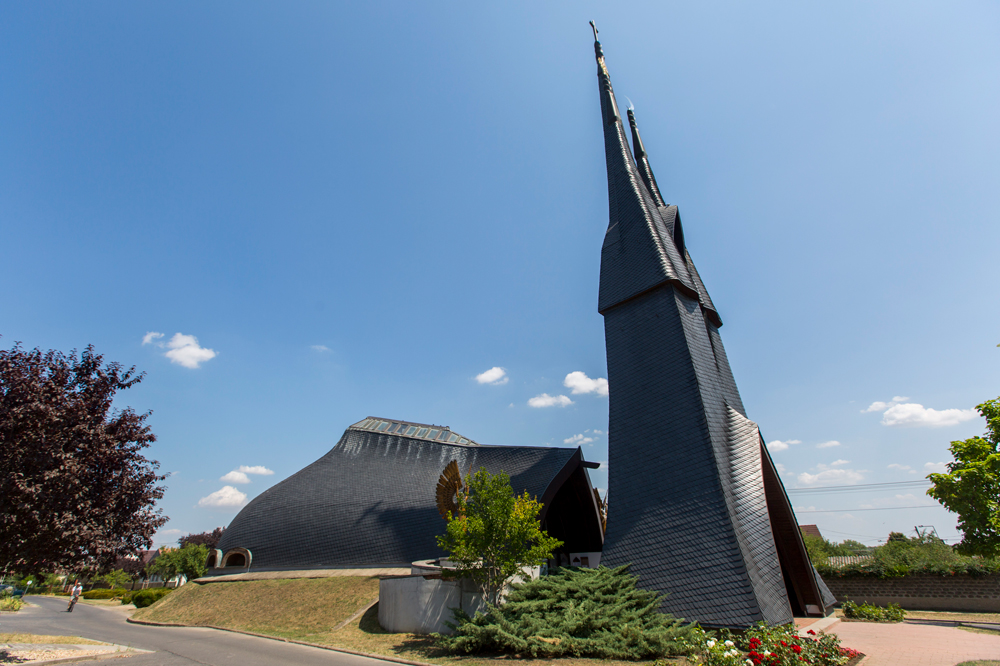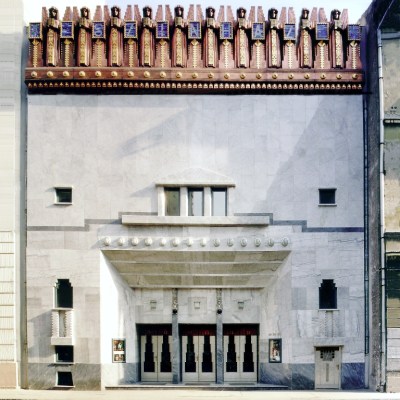From the March 2024 issue of Apollo. Preview and subscribe here.
The Hungarian architect Imre Makovecz (1935–2011) once said to me, during a conversation about a drawing he was working on, that there were two worlds. One was the world we were in. The other, for which he was drawing his building, was a world that might have been. These two worlds co-exist, he said, but we need to work hard to see the second kind.
Makovecz was a remarkable architect. His work could shock, move, repel, astonish, provoke and – tricky for his reputation – be easily politicised. He represented a moment in which architecture was supposed to stand for something amid the end days of communism and the collapse of an entire world view. His strange oeuvre resists easy consumption, its influence tethered to his native Hungary. But there it lurks, still capable of provoking intense reactions.
Makovecz began his career like all architects in post-war Hungary, with one of the state bureaux. He designed interesting, sculptural structures which blended brutalism with an organic feel for form. Much influenced by Rudolf Steiner (notably his timber Goetheanum and the concrete version which succeeded it; see October 2022 issue of Apollo), his designs were reactions to the system-built modernism which was then becoming ubiquitous across the Eastern Bloc. His work was varied, from the thatched-roofed, concrete-bodied twin structures of the Sio Restaurant (1964) to the bunker-like department store in Bodrog (1969).
Bodrog department store in Sarospatak, designed by Imre Makovecz and built in 1969

In 1975 Makovecz’s design for the Farkasret mortuary chapel in Budapest caused a small global ripple. He created a timber ribcage inside the existing structure, with the funeral bier at its heart. Layered, anthropomorphic seats occupied the spaces between the ribs like mourners, so that even when empty the chapel felt inhabited, ensouled. His growing reputation, his sharp critique of state-sanctioned modernism and his pronouncements on the inhumanity of communism also drew the ire of the Hungarian authorities, who banished him to the forestry department.
Exile proved the making of Makovecz. Working on campsite buildings, scout huts, ski-lifts, community centres and even toilets, he began developing a timber architecture, an oeuvre which seemed to grow from the woods and the strangest, deepest of dreams. Forms were borrowed from Hungarian folk embroidery and old Transylvanian stave churches. There were hints of American organic architecture, of Frank Lloyd Wright and Herb Greene. He gathered around him a coterie of like-minded young architects, opposed to what they saw as communism’s insistence on sameness and mechanised mass production. Makovecz used country carpenters and joiners and often challenged them to make his buildings with limited means and local materials, in a Ruskinian effort to revive the humanity and joy in construction work.
By the time he began to receive commissions for bigger buildings, like the church at Paks, communism was a fading force and Makovecz’s rebellion was tolerated, if not exactly encouraged. That church hungrily mixed its metaphors, from a scaly, mythical monster to a psychosexual dream, gothic arches to the fetishisation of the forest. The late 1980s saw a slew of important buildings mostly for small towns and villages; community halls with feathered timber roofs like eagles’ wings and interiors like something for feasting Vikings. They imbued buildings with mythology, subconsciously familiar folk motifs and haunting memories of ancestral space.
Church of the Holy Spirit in Paks, Hungary, designed by Imre Makovecz and built in 1991

Then communism collapsed. After 1989 Makovecz suddenly found himself a kind of national hero, lauded as a visionary seer. When Hungary needed an architect to represent its new-found freedom at the Seville Expo in 1992, there was an inevitability in the choice. Sited near the glass British pavilion (which overheated in the sun), Makovecz designed another great beast of a building, a dragon-backed hall with seven towers representing the vernaculars of Hungarian regional church architectures. At its centre was a tree set into a glass floor, its roots mirroring its canopy. Here, made visible, was the world that might have been, the darkness below, the reaching for the light above.
Yet with communism gone, Makovecz seemed to have lost some of his oppositional drive. His ire turned instead to the ravages of globalisation: the corporations that moved into Hungary after the collapse of socialism and the urge, once again, towards mass-produced homogeneity. In his fierce mix of Catholicism, Steinerian cosmology and Hungarian nationalism, Makovecz foreshadowed the rise of the Hungarian right. He was coopted by Viktor Orbán and the reactionary, nativist tendencies which continue to dominate contemporary Hungarian politics.
Makovecz died in 2011, before the fully-fledged turn to ‘illiberal democracy’, but his ideas undoubtedly contributed to a sense of Hungarian exceptionalism. The Magyars, ethnically unrelated to the Slavs and Germans who surround them, have been creating and recasting their identity ever since the competition with their partners in the Austro-Hungarian Empire. The art nouveau architects of the fin de siècle (notably Odon Lechner and Bela Lajta) excavated forms from the ancient past and used them to evolve a new national style which Makovecz would tap into decades later.
Church of the Holy Spirit in Paks, Hungary, designed by Imre Makovecz and built in 1991

Despite his adoption by the right, in his later years Makovecz continued to delve into a fantastical world of the imagination. His drawings, pencil sketches of animistic cathedrals or buildings emerging from mountains, or collages of vegetal towers and asparagus skyscrapers, remained as strange and unsettling as anything he had ever done. When realised, these megaprojects sometimes fell short of his expressionistic imagination, lacking the finesse and the dreamlike qualities that made them so uncanny on paper. But his work remains an absolute source of inspiration, still provoking discussion about the spiritual in architecture, about national identity and the worlds that might have been.
From the March 2024 issue of Apollo. Preview and subscribe here.



